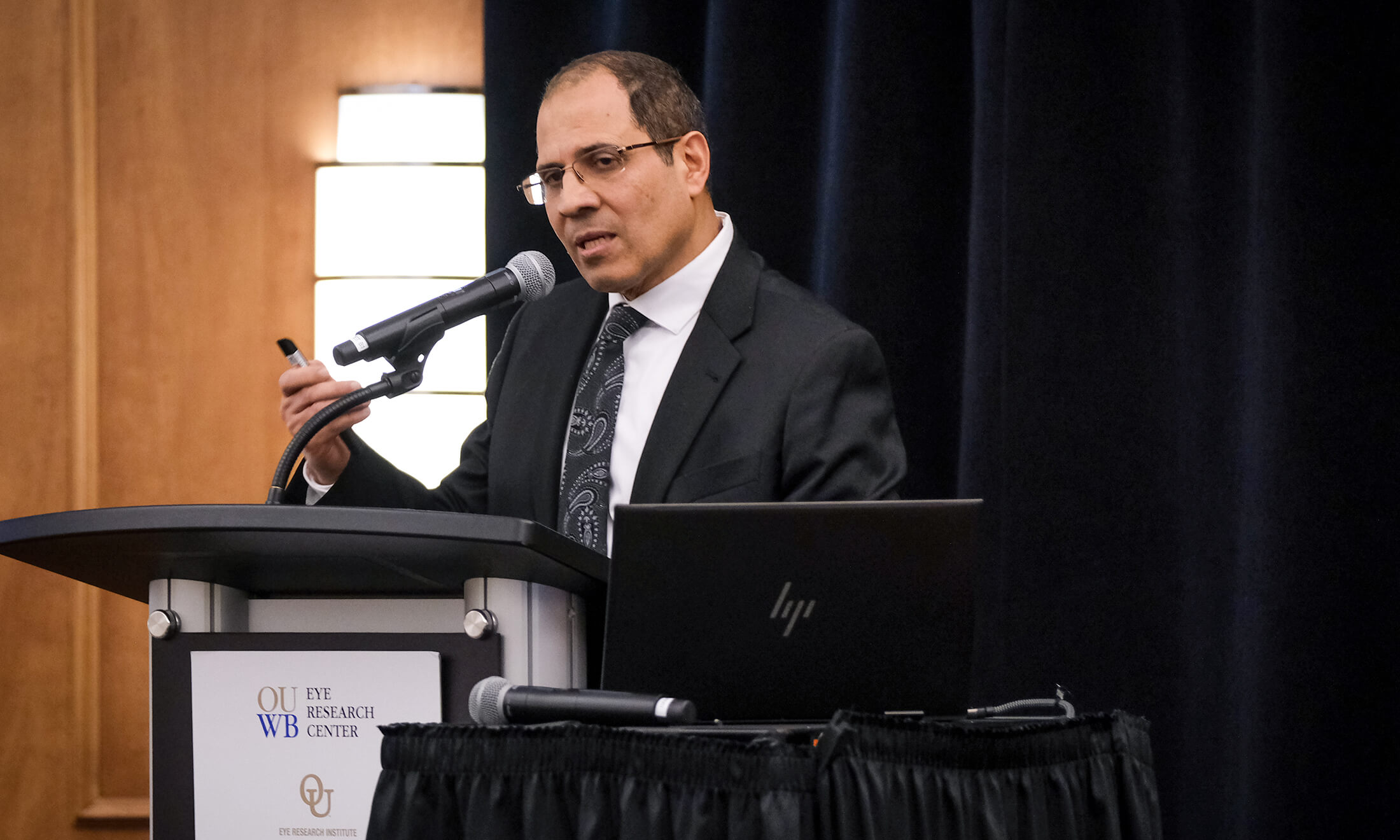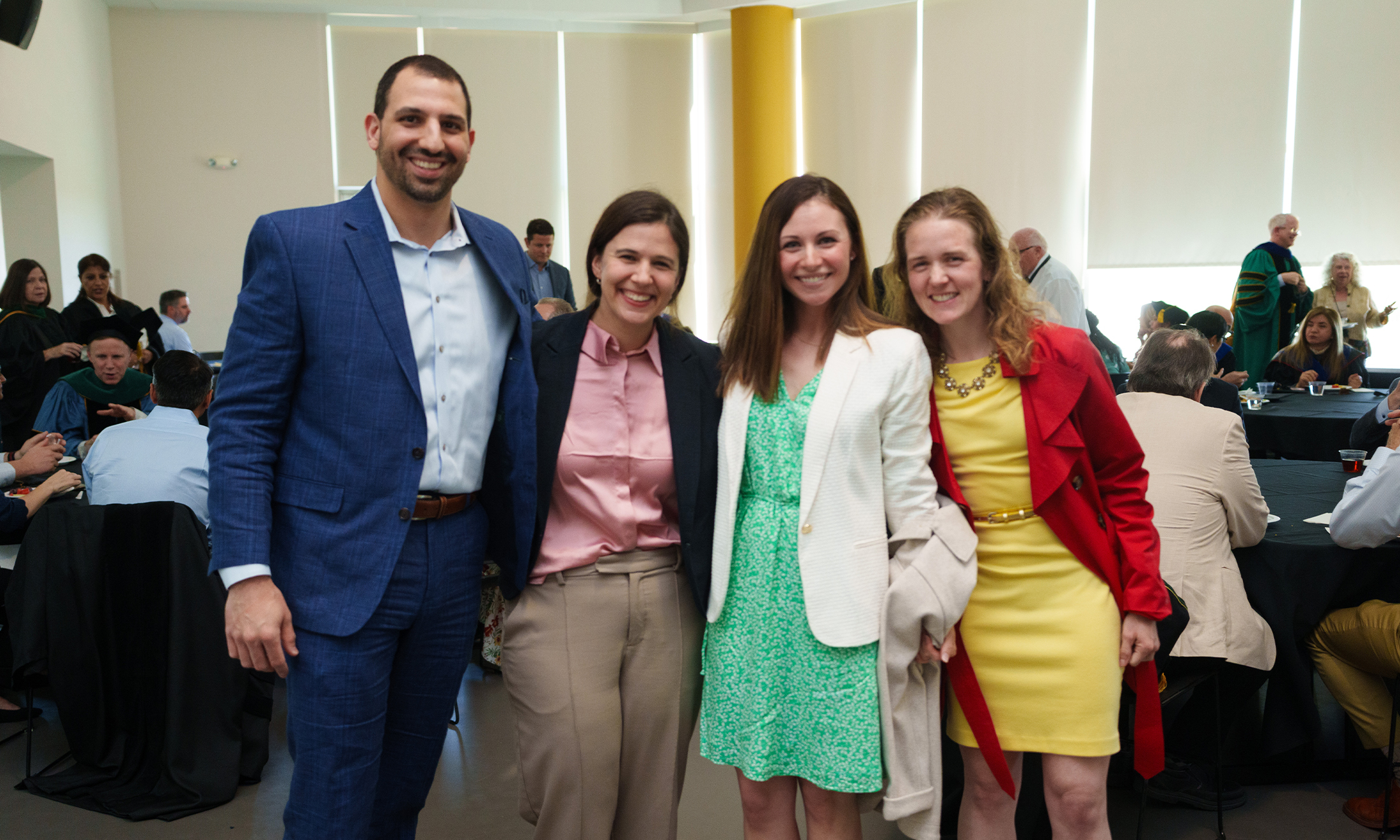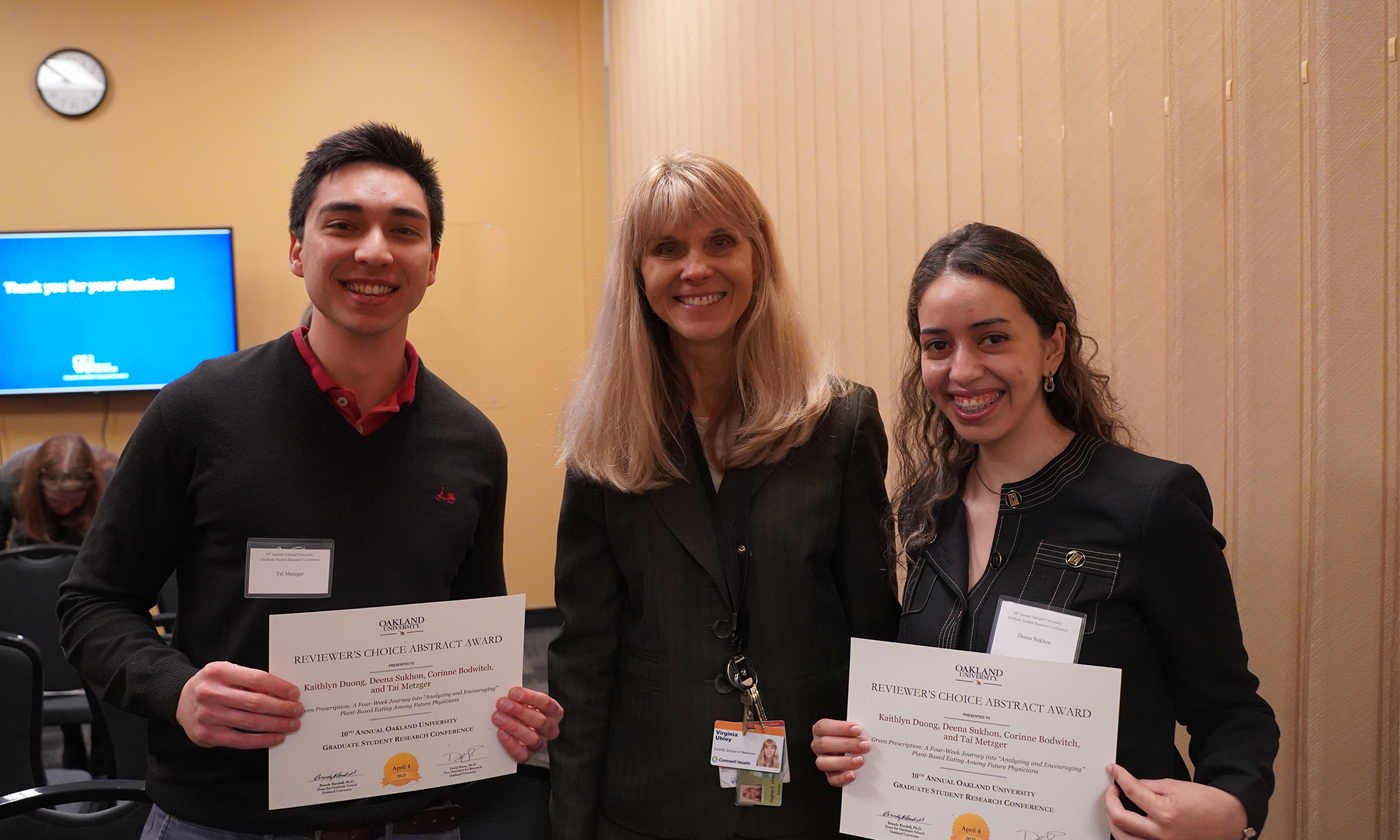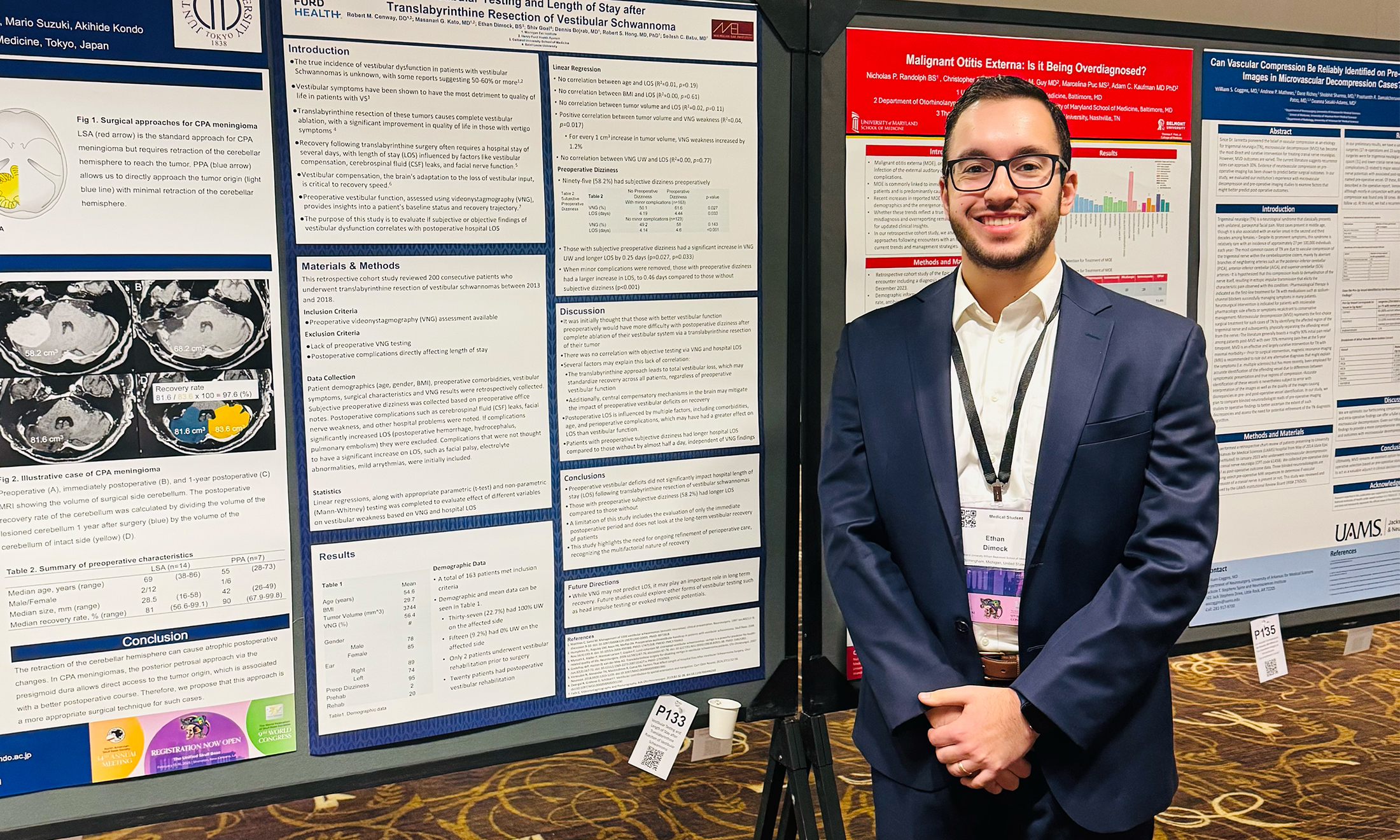‘Kind of magic’
Inaugural retreat celebrates past, present, and future of eye research at OU, OUWB
The Oakland University William Beaumont Eye Research Center recently held its inaugural retreat in partnership with Oakland University Eye Research Institute.
The March 25 workshop brought faculty and students together in a supportive environment for learning and sharing information on eye research stemming from the Eye Research Center (ERC) and Eye Research Institute (ERI).
The all-day symposium was organized for principal investigators, undergrads, Ph.D.s, and post-docs to share progress on their research projects. Lectures were followed by lively and engaging question and answer sessions.
Key leaders from OU, OUWB, and Corewell Health William Beaumont University Hospital participated in the event to support and congratulate V. Everett Kinsey endowed professor, Mohamed Al-Shabrawey, M.D., Ph.D., director of OUWB ERC and OU ERI, and ERC/ERI investigators and students on their ongoing successful initiatives.
“This is a platform to gather everyone together to exchange ideas,” said Al-Shabrawey.
“It also gives us the opportunity to discuss our accomplishments from the last year and our goals for the future.”
‘Broaden our networks’
Professor and associate dean of research for OUWB, Richard Kennedy, Ph.D., was first to the dais. He welcomed everyone and acknowledged the effort that went into organizing the retreat and applauded Al-Shawbrawey on building a collaborative relationship between the ERC and ERI, which is celebrating 55 years as a nationally recognized center of excellence in vision research.
“Research is a team sport,” said Kennedy. “Interdisciplinary collaboration among investigators, departments, schools and institutions is vital to maintaining labs and programs that address important questions. The environments established by these partnerships also provide opportunities for engaging the next generation of physicians and scientists.”
Kennedy was followed by David Stone, Ph.D., vice president for research at OU, and Nivedita Mukherji, Ph.D., associate provost for faculty affairs at OU.
Stone described the successful history of the ERI and its importance to the research culture at OU. He said that the addition of the medical school’s ERC will “broaden our networks” with the ophthalmology group at Corewell Health William Beaumont University Hospital and provide the opportunity to build clinical and translational science capabilities and collaborations.
“Being able to conduct eye and vision research from bench to bedside will enable us to develop research programs that run from discovery to the development and testing of therapeutics, and to do so more quickly and efficiently," said Stone.
Reflections
Al-Shabrawey thanked the co-chairs of the retreat committee, Dao-Qi Zhang, Ph.D., and Amany Tawfik, Ph.D. — both associate professors of Biomedical Sciences — for their hard work in organizing the event. He said the retreat was developed to affirm that the ERI and ERC were unified in their mission to build a cooperative research partnership between OU and OUWB.
“We are now working together under the same roof, using the same resources and conducting the same research,” he said.
The retreat was a good opportunity, he said, to strengthen the relationships between principal investigators and those in other areas of study, such as neuro- and biological science, population and public health, regenerative medicine, physics, and the engineering and computer sciences, along with the hospital system’s ophthalmology department to advance translational and interdisciplinary research.
Other objectives for the retreat included exchanging views on research goals and challenges and discussing strategies for promoting funding.
Al-Shabrawey added “this kind of support is critical for our research and our contribution to the overall academic mission of the university.”
Pediatric Retinal Research
Kenneth Mitton, Ph.D., associate professor of Biomedical Science at OU, director of the Pediatric Retinal Research Laboratory (PRRL), and director of the Summer Undergraduate Program in Eye Research (SUPER), explained that he was speaking on behalf of the Pediatric Retinal Research Foundation (PRRF), founded in Michigan in 1990 by physicians from Associated Retinal Consultants (ARC). The mission of the PRRF is to support families impacted by blinding pediatric retinal diseases and “champion the quest for a cure.”
“This wonderful physician group helps families across the country, and even around the world, navigate their lives when they have children with these blinding conditions,” said Mitton.
The PRRF has always supported basic science research and partnered with ERI in 2012 by funding the construction of the PRRL located in Dodge Hall on the OU campus.
Mitton said that none of that could have been possible without the late Michael Trese, M.D., Frank Giblin, former ERI director, and Kimberly Drenser, M.D., Ph.D. He also acknowledged current PRRF President, Tony Capone, Jr. M.D., Wendy Dailey, and Al-Shabrawey, foundation board member.
Mitton explained that the lab’s main goal is to facilitate bench to bedside research efforts using biochemistry, molecular biology, in vivo imaging, and electrophysiology research. A secondary initiative is to train OU science and bioengineering students, along with OUWB medical students, in applied clinical human genetics and the process of entrepreneurship and technology transfer.
Mitton noted an immeasurable value of “physicians interacting with scientists in the same spaces, because when they talk to each other, things happen. That’s the kind of magic that we’re looking for.”
Clinical and translational research
The director of the Beaumont Eye Institute at Corewell Health William Beaumont University Hospital, George A. Williams, M.D., was the first of two keynote speakers. Williams said he moved to Michigan from Milwaukee in 1988 not only for the clinical excellence of the ophthalmology department at what is now Corewell Health William Beaumont University Hospital, but for the opportunity to participate in the state-of-the-art research taking place at the ERI.
During his presentation on “Artificial Intelligence and Big Data in Age-related Macular Degeneration,” Williams, who also serves as chair of the Department of Ophthalmology at OUWB, said “artificial intelligence will be the most defining factor of clinical medicine in the next decade.”
“We’re fortunate in that we have one of the premier ocular research centers in the country right here at OU,” he said. “We have a long history of collaborating with them in our training and research programs. If you ask the faculty at OU, they’ll tell you that they’re not doing research just to do research — they’re doing research that has an impact on patients.”
He explained that part of his role is to help translate the results of ERI research into clinical care.
“A good example of this kind of collaboration is a grant is Dr. Al-Shabrawey and I have submitted to the Corewell Health William Beaumont University Hospital research department,” said Williams. “If approved, the ophthalmology group will provide him with surgical specimens that he can analyze in his lab to look for specific markers for ocular disease.”
“The beauty of research is that interfacing with basic science colleagues and learning their thoughts on diseases can lead to collaborations,” he added. “We can contribute to their research and they can provide answers to issues we’re having in the clinical setting.”
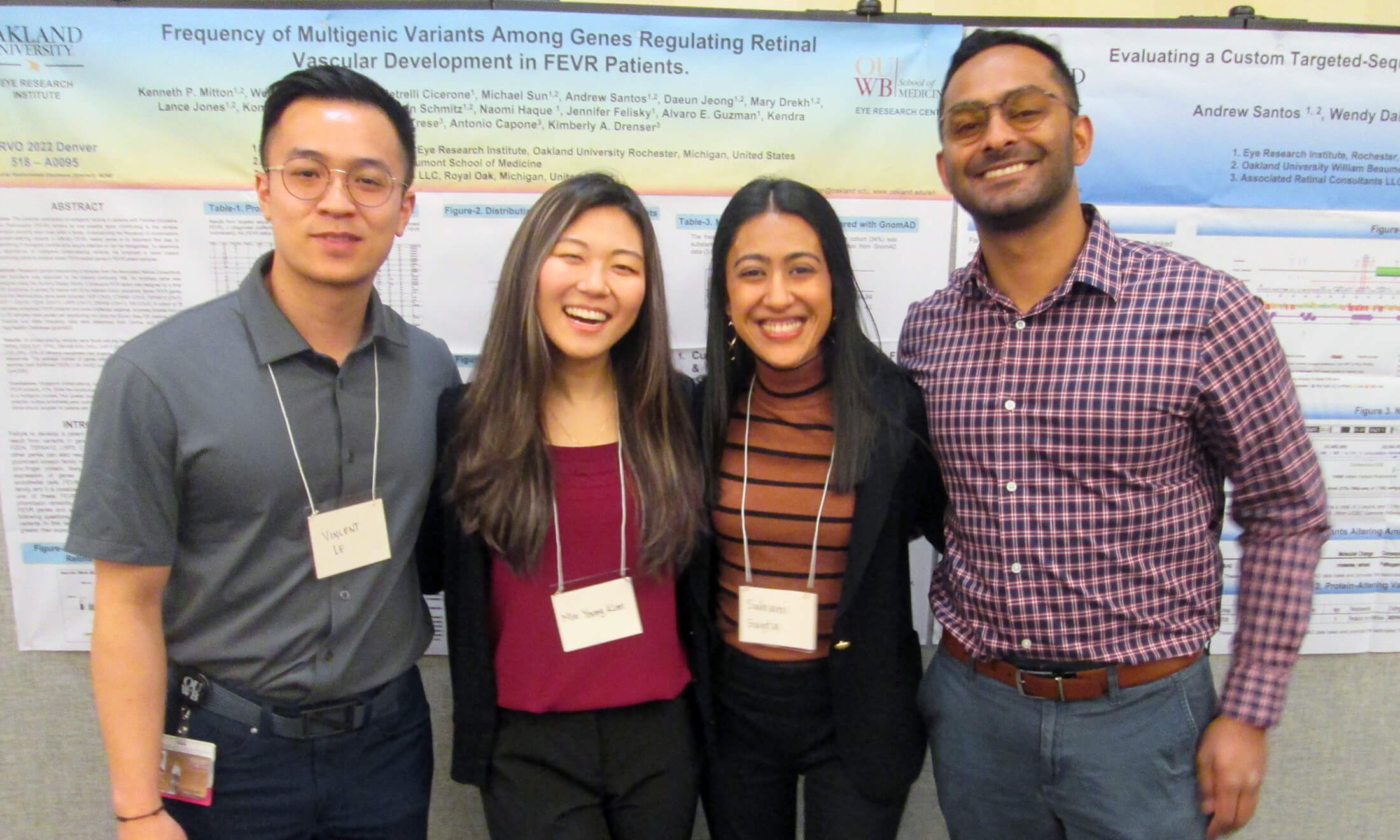 |
| Vincent Li, M1, Min Young Kim, M2, Suhani Gupta, M2, Neelesh Peddireddy, M1. (Photo by Nikolas Charles) |
The second and final keynote speaker of the retreat was Yannis Paulus, M.D., associate professor, Ophthalmology and Visual Sciences, and associate professor, Biomedical Engineering, University of Michigan and Kellogg Eye Center Medical Director, Grand Blanc ACU. He discussed “Multimodal OCT, Fluorescence, and Photoacoustic Molecular and Cellular Imaging of the Retina.”
Paulus explained the importance of identifying molecular changes in the eye during the early stages of eye diseases. When images are taken of a patient’s eye after a bleed or other major problems, clinicians are then looking at end stage anatomical changes. His research shows that identifying changes earlier that are happening at a molecular level will result in better outcomes.
“A lot of eye diseases are similar to cancer in that if they’re caught earlier, patients will be able to see better in the long term,” said Paulus.
After his lecture, he noted the importance of scientists working together as one community, without the boundaries of medical schools or even distance.
“Cutting edge research nowadays is very interdisciplinary and very multidisciplinary,” said Paulus. “Working with experts from different areas and being able to have discussions at a retreat like this is when you get the novel research ideas. A lot of the big leaps forward happen at the intersection of different technologies, different kinds of labs, and different research experiences.”
Paulus explained that many research grants are joint ventures between different institutions that could be in the same city, in another country or even on another continent.
“We’re seeing more multi-principal investigator grants,” he said. “That is just because it’s turning more into a team sport. Having those sorts of forums for everyone to meet and discuss and collaborate and lay the groundwork for collaborations is incredibly important. Team science mentality is actually really the way to go, to really move the needle forward and not just to get grants, but to do amazing science and research to improve the sight of patients and cure blindness.”
Presentations
Faculty oral presentations began with Al-Shabrawey’s research on “A Tale of Bone Morphogenetic Proteins in Diabetic Retinopathy.” Mitton discussed his work on “VEGF and Norrin Signaling in Human Retinal Endothelial Cells and Biotech Development of a Norrin-based Protein Therapeutic Drug.” Zhang chose “An Overview of the Laboratory Research Progress in Retinal Development, Function, and Disease” for his retreat lecture.
Several students also presented.
SUPER student, Paul Negoita shared his research on “Retinal pigment epithelial cells (RPE) in Health and Disease; Role of Homocysteine.” The senior pursuing a degree in biology said he hopes to attend medical school at OUWB after he completes his undergraduate degree.
Afterwards, Negoita said “I was nervous because it was only the second presentation I’ve ever given in my life. The first one was during the SUPER program.”
He explained that his lecture focused on the significance of homocysteine and how it causes disease in RPE cells by affecting expression of different markers, ultimately leading to Age-Related Macular Degeneration (AMD). He said that he wouldn’t have had the opportunity to present at the retreat if it wasn’t for Tawfik and the training he received in SUPER.
“I worked with cells, mice, and learned other useful techniques,” said Negoita. “Dr. Tawfik also gave me a lot of freedom to practice what I was interested in learning. She was very encouraging and always motivated me to do my best work. Overall, it was the best research experience I’ve had at OU.”
Min Young Kim, M2, conducted her research in the lab of Al-Shabrawey, explained her work on “Protective Effects of resolvin-D2 in LPS-induced Retinal Inflammation.”
She was glad that Al-Shabrawey gave undergrads, medical students, and Ph.D.s the opportunity to give oral presentations.
“That gave us a chance to see all the different levels,” said Kim. “It was also valuable to hear the guest doctors speak so we could see that you can really be both a physician and a scientist.”
Kim added how much she enjoys the research she’s doing as part of her Embark program and that she appreciates the support from her mentor
“Dr. Al-Shabrawey is really involved in our research work,” said Kim. “He really wants to see us make progress and he’s always very encouraging.”
Ph.D. student, R. Casey Boucher, who works in the lab of Andrew F.X. Goldberg, Ph.D., Reddy Professor of Biomedical Sciences, ERI, detailed his research on “Shaping Rods and Cones for Healthy Vision.”
“The retreat was the first event where we had people from the ERC and the ERI together in one place. There's a lot of exciting stuff going on,” said Boucher.
Other students who gave oral presentations were Manuel Mosso-Pani, Ph.D., and Mohamed Shalaby, a Ph.D. student.
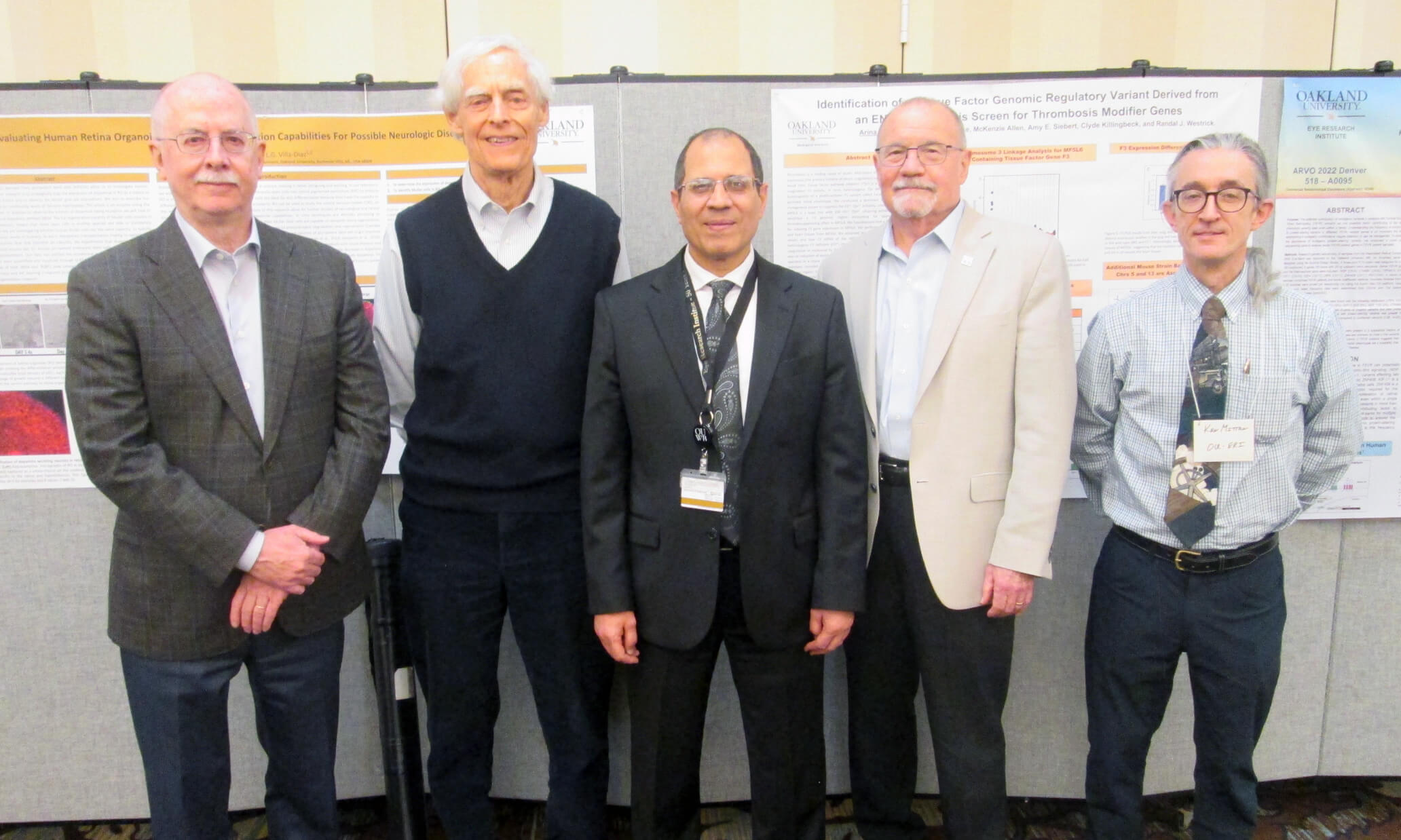 |
| George A. Williams, M.D., chair, Department of Ophthalmology, OUWB, director of the Beaumont Eye Institute, Corewell Health East; Frank Giblin, Ph.D., distinguished professor emeritus of Biomedical Sciences and former ERI Director; Mohamed Al-Shabrawey, M.D., Ph.D., director, OUWB Eye Research Center, director, OU Eye Research Institute; Richard Kennedy, Ph.D., professor and associate dean of Research, OUWB; Kenneth Mitton, Ph.D., associate professor of Biomedical Sciences, OU, director, PRRL and SUPERFuture goals. (Photo by Nikolas Charles) |
Al-Shabrawey said there were too many people to thank to name everyone individually, but acknowledged several groups, including the core faculty, clinical faculty, and ERC members. He expressed gratitude to those who made generous donations to the ongoing research efforts of the ERC/ERI, including the V. Everett Kinsey, Venkat Reddy, Frank and Jean Giblin, and Harding endowments.
Looking ahead, Al-Shabrawey said priorities for the ERC and ERI include: making improvements to the research environment, such as strengthening infrastructure and growing ERC faculty; research grant growth; promoting interdisciplinary and translational research; expanding training via graduate programs; and achieving continued national and international recognition and visibility.
He noted some of the challenges that could stand in the way: funding; recruitment of additional scientists; aligning their objectives with the National Eye Institute; promoting research, education and training; and supporting communications between basic scientists and clinicians for effective translational research.
Al-Shabrawey wrapped the day by showing a slide that read, “the best way to predict the future is to create it.”
Impressions
After a day of discussing research initiatives, renewing past relationships and making new connections, the participants shared their impressions of the inaugural retreat.
“The retreat did an excellent job of setting the stage for annual retreats for years to come,” said Kennedy. “It was an excellent presentation of what’s going on at the Eye Research Institute and the Eye Research Center. I was equally impressed with Dr. Al-Shabrawey’s vision for the future.”
Stone also expressed appreciation for an eye on the future.
“The ERI has a history of making significant contributions to our understanding of the eye and I think the first retreat makes it clear that we expect no less from the ERC,” said Stone.
Giblin credited Al-Shabrawey for “showing real leadership,” and said that he appreciated involvement from so many people.
“I like that there was a representative from the provost office, OUWB, and the Department of Ophthalmology,” said Giblin. “They all gave presentations and provided support for the ERC and the ERI.”
Williams said he appreciated the presentations.
“One of the things I look for at any scientific meeting is new knowledge and the opportunity for collaboration. I’m pleased to say that I found both of those at the retreat today,” he said.
Paulus said “the retreat was excellent.”
“It was a fantastic group of people with a lot of energy and enthusiasm,” he said. “I enjoyed getting a sense of the current research projects. Even more exciting was Dr. Al-Shabrawey’s roadmap for the future. It was a pleasure to be a part of it.”
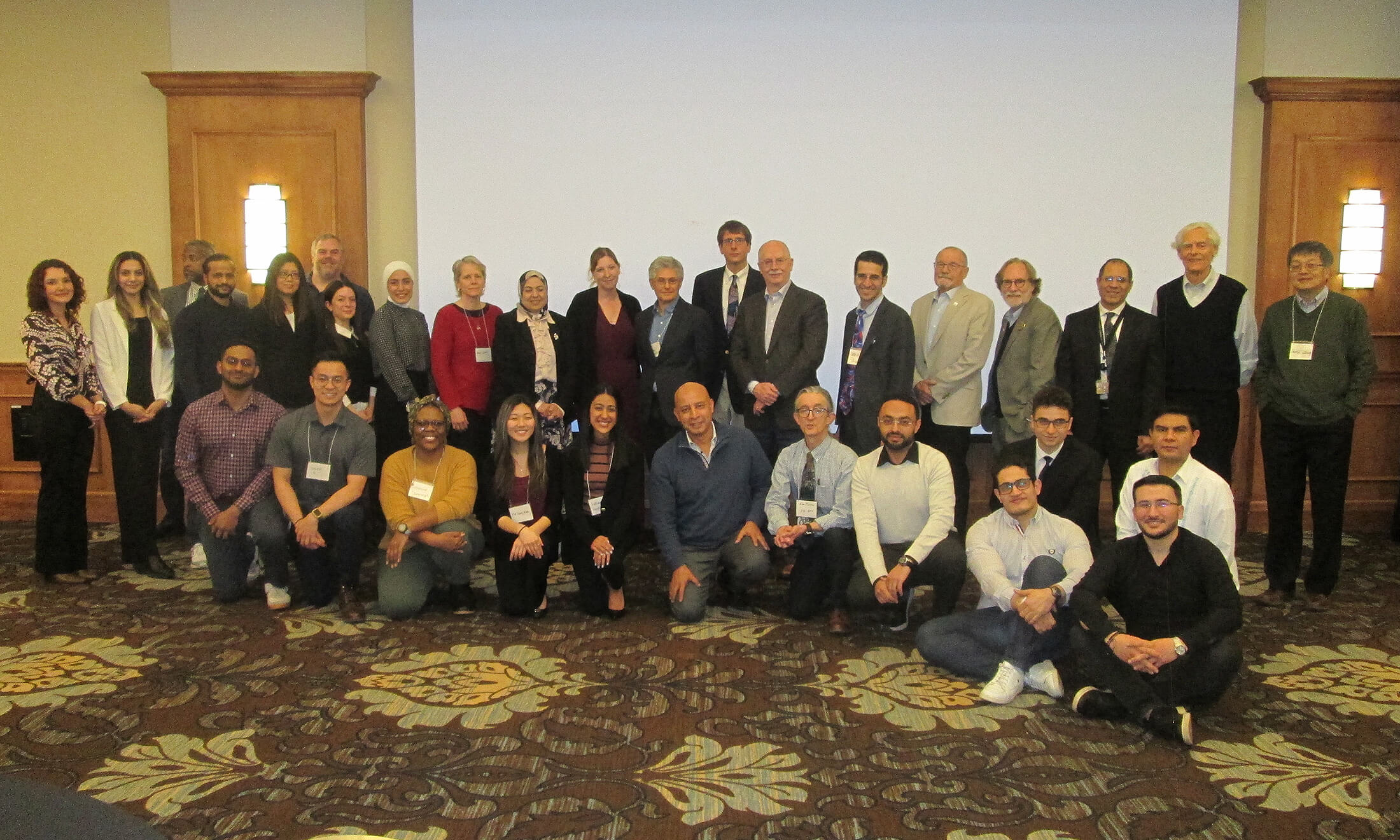
 April 27, 2023
April 27, 2023
 By Nikolas Charles
By Nikolas Charles